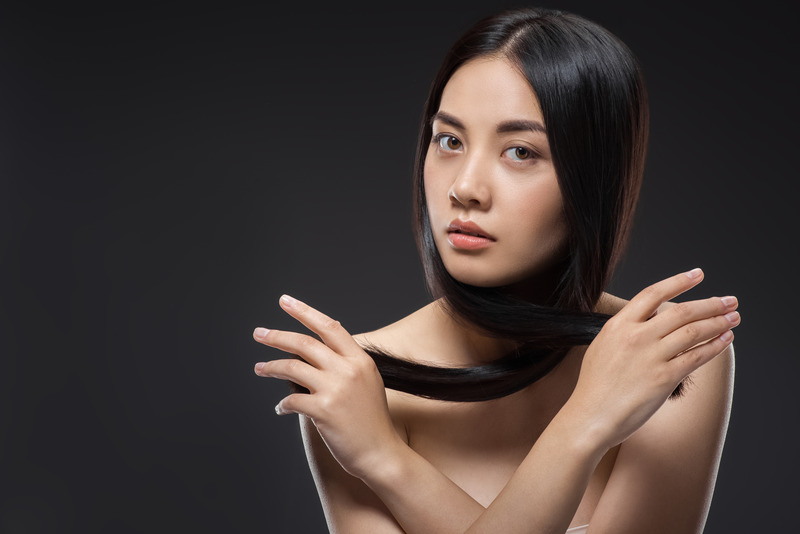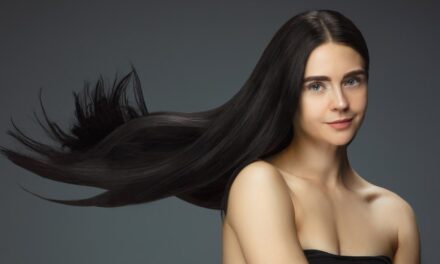
Hair, often considered a person’s crowning glory, holds immense significance in defining one’s appearance. Understanding the difference between unhealthy and damaged hair is pivotal in our quest for healthy hair.
In this comprehensive guide, we delve into the essential markers of hair health, including hair growth, hair elasticity, hair color, and the overall vitality of hair follicles.
The Importance of Taking Care of Your Hair
Caring for your hair is more than just maintaining aesthetics; it is hair’s health as a gateway to showcasing your overall well-being. The condition of one’s hair can mirror one’s overall well-being and lifestyle balance.
It speaks volumes about your personal care routines and dietary habits. Whether it’s combating hair loss or promoting new hair growth, understanding the distinction between healthy hair and damaged hair is crucial.
10 Signs Your Healthy Hair

1. Shiny Hair
Shiny hair is a clear indicator of healthy hair. When hair follicles are strong and smooth, they reflect light, giving your hair a natural shine. Shiny hair is often more manageable and less prone to split ends.
Consider a day when you step out, and the sunlight hits your hair, revealing a natural gloss and sheen reminiscent of the smooth texture of silk or satin. This radiance, especially seen in natural light, indicates the presence of healthy oils and a smooth cuticle layer, both hallmarks of shiny, healthy hair.
To maintain shiny hair:
-
condition hair regularly
-
avoid overwashing
-
use products that enhance shine.
Remember: Opt for shampoos and conditioners enriched with natural oils like argan or jojoba oil to enhance shine and protect the cuticle layer.
2. Hair Elasticity
Hair elasticity is a sign of healthier hair. It reveals how hair responds to stress and styling, showcasing its strength and flexibility.
Imagine gently pulling a wet strand of your hair and watching it stretch to approximately 30% of its original length. It bounces naturally straight and back upon release without snapping or feeling limp.
This resilience and ability to return to its natural state signify strong hair elasticity, indicating well-moisturized and healthy hair.
To maintain hair elasticity:
-
regular deep conditioning treatments
-
avoiding tight hairstyles can enhance hair elasticity
-
use hair masks rich in keratin
-
use biotin to improve elasticity and promote hair growth
3. Healthy Scalp
A healthy scalp is the foundation for healthy hair growth. It’s free from dandruff, itchiness, and excessive oil, promoting a conducive environment for hair follicles.
Glancing at your hair in the mirror reveals no signs of flakiness, redness, or excessive oiliness on your scalp. When you run your fingers through your hair, you feel a balanced, clean, and irritation-free scalp, signaling a healthy foundation for hair growth and optimal hair health.
To maintain scalp health by:
-
exercising regularly
-
avoiding harsh chemicals
-
moisturizing it
-
incorporate tea tree oil or aloe vera-based products to keep a balanced and healthy scalp
4. Minimal Shed Hair
While it’s normal to shed hair daily, excessive hair loss could be a sign of unhealthy hair. Minimal shed hair indicates strong hair roots and optimal hair health.
While cleaning your brush or after a shower, you notice only a few strands of hair within the average daily hair fall range of 50-100 strands. This minimal loss is a positive sign of strong hair roots and a balanced hair life cycle, highlighting overall hair health.
To avoid hair loss:
-
avoid tight hairstyles
-
brush gently, especially when dealing with wet hair
-
maintain a balanced diet
-
consider supplements rich in Vitamin E and Biotin for stronger roots
5. Smooth and Strong Hair Strands
Smooth strands indicate that hair grows a healthy cuticle layer, preventing breakage and split ends. Strong hair is less prone to becoming brittle hair.
Running your fingers through your hair feels smooth, without bumps or roughness. Additionally, your hair can withstand regular styling and brushing without showing signs of breakage or becoming brittle, showcasing the strength and smoothness of healthy hair strands.
To maintain smooth and strong hair strands:
-
use heat protectant sprays
-
avoid excessive heat styling
-
trim split ends regularly
Remember: Opt for silk pillowcases and combs with wide teeth to prevent breakage and maintain smooth strands.
6. Consistent Hair Color
Consistent hair color, without premature graying, is a positive sign. It indicates the hair is well-nourished and not dehydrated.
Observing your hair in natural light, you notice an even, consistent color without significant disparity or premature graying. This uniformity, especially when not subject to frequent color treatments, indicates well-nourished, hydrated, and healthy hair.
To maintain hair color:
-
protect hair from excessive sunlight
-
avoid overuse of color treatments.
-
use color-protecting products
-
use hydrating masks to combat dehydrated hair
7. Voluminous Fullness
Full, voluminous hair is a sign of healthy hair. It indicates that the hair is not thinning and the hair follicles are producing hair optimally.
When you look at your hair’s silhouette, it appears complete and voluminous, not lying flat or lifeless. The thickness and body of your hair, even without the use of styling products, demonstrate the vigor and fullness characteristic of healthy hair.
To enhance hair volume and growth:
-
avoid overwashing
-
use volumizing products
-
maintain a diet rich in proteins and vitamins to promote hair thickness
-
invest in natural volumizing shampoos and conditioners
-
consider biotin supplements to enhance hair volume and growth
8. Hydrated and Not Prone to Frizz
Hydrated hair is not prone to frizz or breakage, indicating that it is not dehydrated hair and the cuticle layer is healthy. Avoid using high temperatures when styling and regularly hydrating masks and oils.
On a humid day, your hair maintains composure, not becoming a frizzy, uncontrollable mane. The ability to withstand humidity and maintain hydration levels without excessive dryness or frizziness is a clear sign of well-hydrated and healthy hair.
Incorporate products with argan oil, coconut oil, or shea butter to maintain hair hydration and manage frizz.
9. Regular Growth and Length Retention
Regular hair growth and maintaining long hair are signs of healthy and balanced hair growth cycles. Trim ends regularly to avoid split ends, avoid harsh chemicals, and use protective styles to retain length.
Over the months, you observe noticeable growth in your hair length; despite regular trims, your hair seems to retain its size well. This steady growth and length retention signal a healthy and balanced hair growth cycle.
Utilize growth-promoting oils such as castor oil and maintain a balanced diet rich in omega-3 fatty acids.
10. Responsive to Moisture and Weather Changes
As seasons change, your hair adapts without significant issues. It doesn’t become overly dry in winter or excessively oily in summer, showcasing its ability to maintain balance and respond well to environmental changes, a hallmark of healthy hair.
Healthy hair responds to changes in weather and natural moisture without excessive frizz or dryness. This adaptability indicates balanced hair health.
Use products suited to the climate, protect hair from extreme weather conditions, and adapt your haircare routine seasonally. Opt for weather-appropriate products, use hats or scarves for protection, and adjust your hydration routine based on weather conditions.
Achieving Healthier Hair for Different Hair Types

Understanding that different hair types require unique care is essential. Whether you have long hair, curly hair, or straight hair, adapting your routine to your hair type will optimize hair health.
Curly Hair
Moisturization is key. Use hydrating products and avoid sulfates to maintain curl definition and prevent dryness.
Straight Hair
Regular trims and lightweight products will maintain sleekness and prevent oiliness.
Wavy and Long Hair
Balanced care, with regular detangling and deep conditioning, will enhance the natural texture of waves and maintain the health of long strands.
Conclusion
Identifying the signs your hair is healthy is the first step towards achieving lustrous, resilient, and beautiful hair. With consistent care adapted to your hair type and the right products, you can foster healthier hair that enhances your appearance and reflects your good health and overall well-being.
Looking for hair care products? Check out Vitamins Revive, a one-stop shop for all your hair care needs! At Vitamins Revive, we carry top-quality shampoos, conditioners, and treatments designed to provide the nutrients your hair needs. Shop now and start your journey to strong, healthy hair!
FAQ’s
How often should I trim my hair to avoid split ends?
Regular trims every 6-8 weeks are recommended to keep split ends at bay and maintain healthy hair.
Can a change in diet improve hair health?
Absolutely! A balanced diet rich in vitamins, minerals, healthy fats, and proteins can significantly improve hair health and promote hair growth.
How can I test the elasticity of my hair?
Gently stretch a strand of wet hair. If it returns to its original length without breaking, it indicates good hair elasticity.











